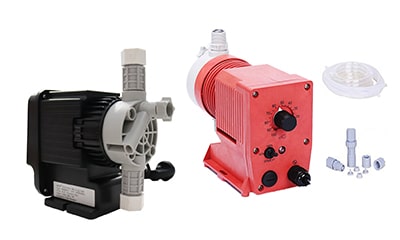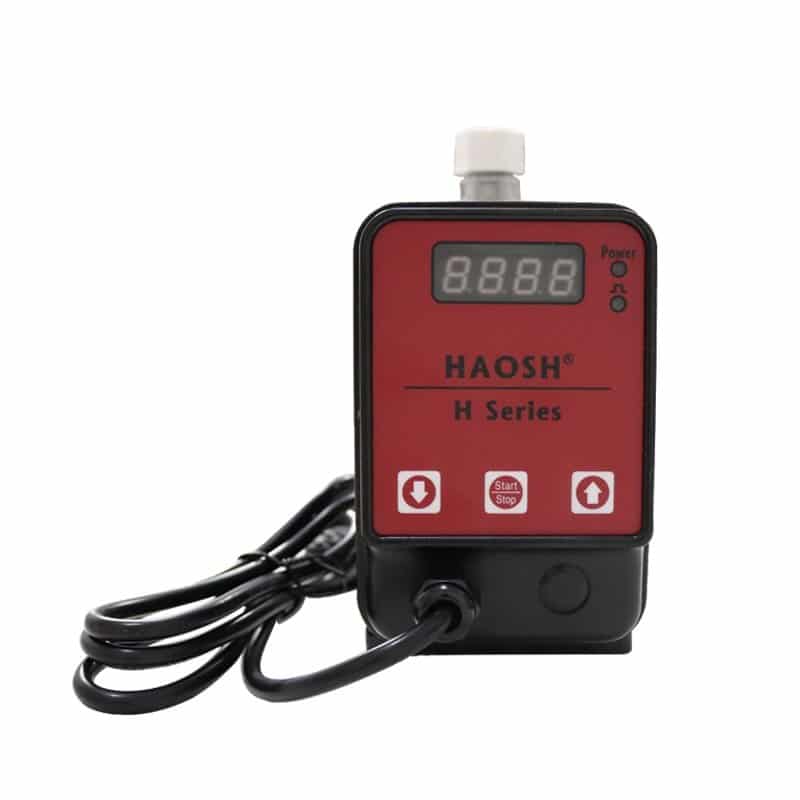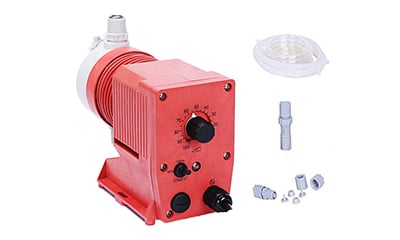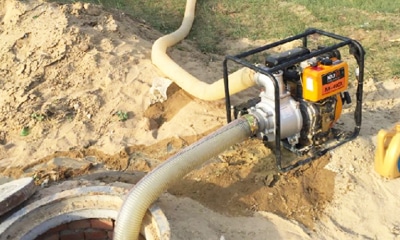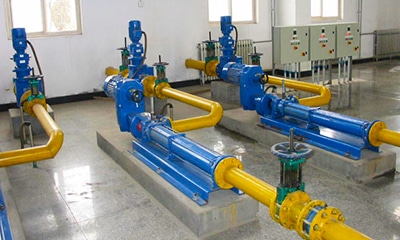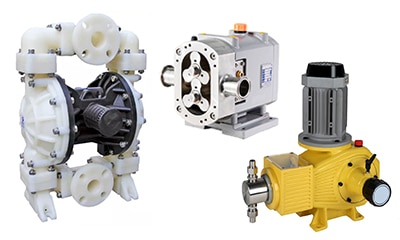What is a dosing pump?
Dosing pump, also known as dose pump, metering pump, is a positive displacement pump that is designed to inject a chemical or another substance into a stream of water, gas or steam. Metering pumps are typically small and provide extremely precise flow rates for maximum control. They are the core part of an integrated metering system designed for automatic chemical dispersion. They are pumps designed to dispense specific amounts of fluid and measure flow control. They use expansion and contraction chambers to move the fluid. Over time, metering pumps have also become highly accurate and can pump a variety of liquids, including corrosives, acids and bases, as well as slurries and viscous liquids.
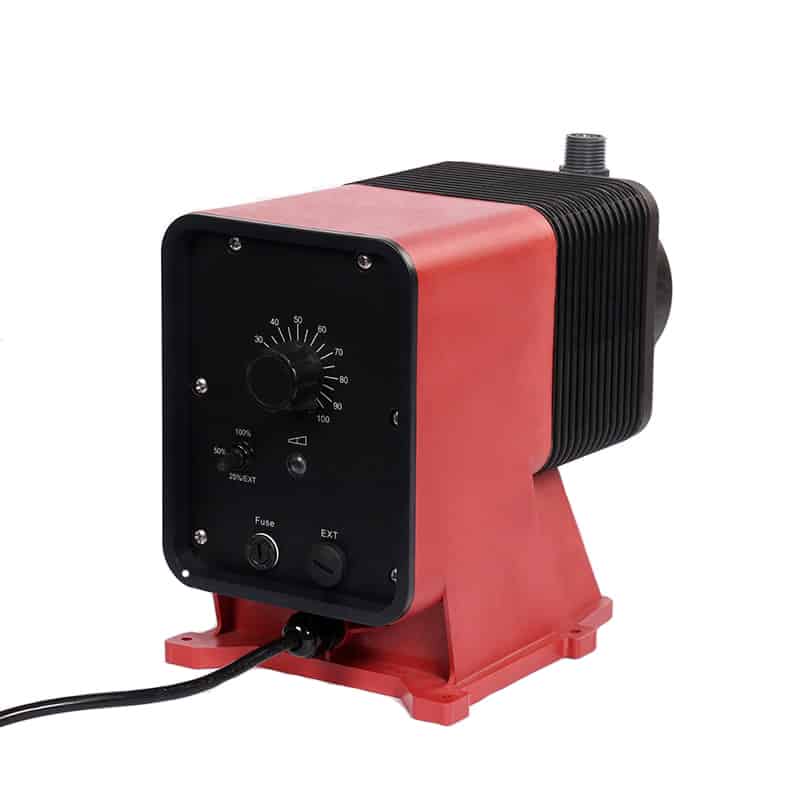
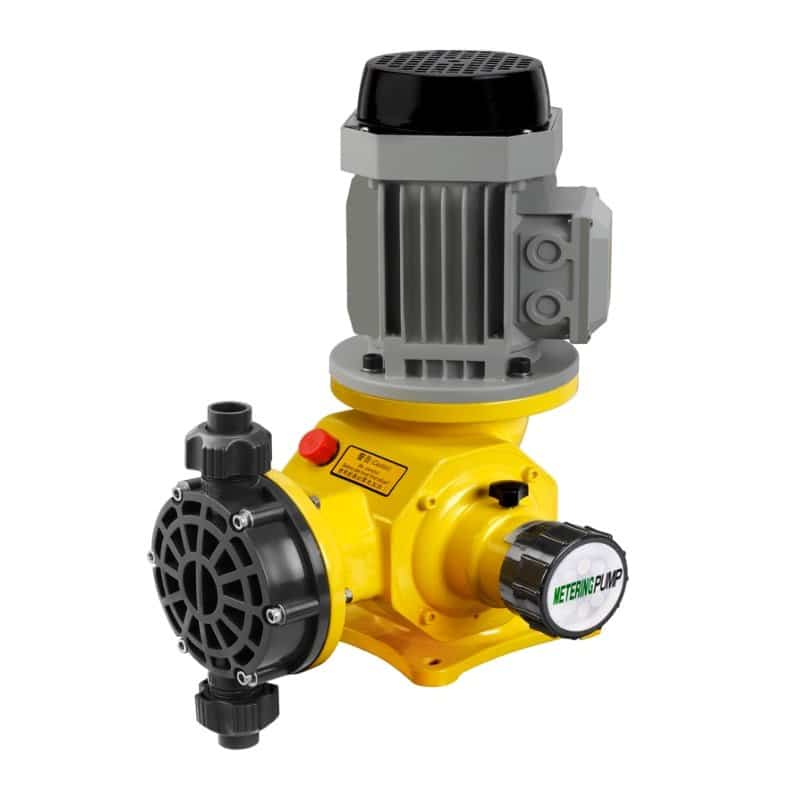
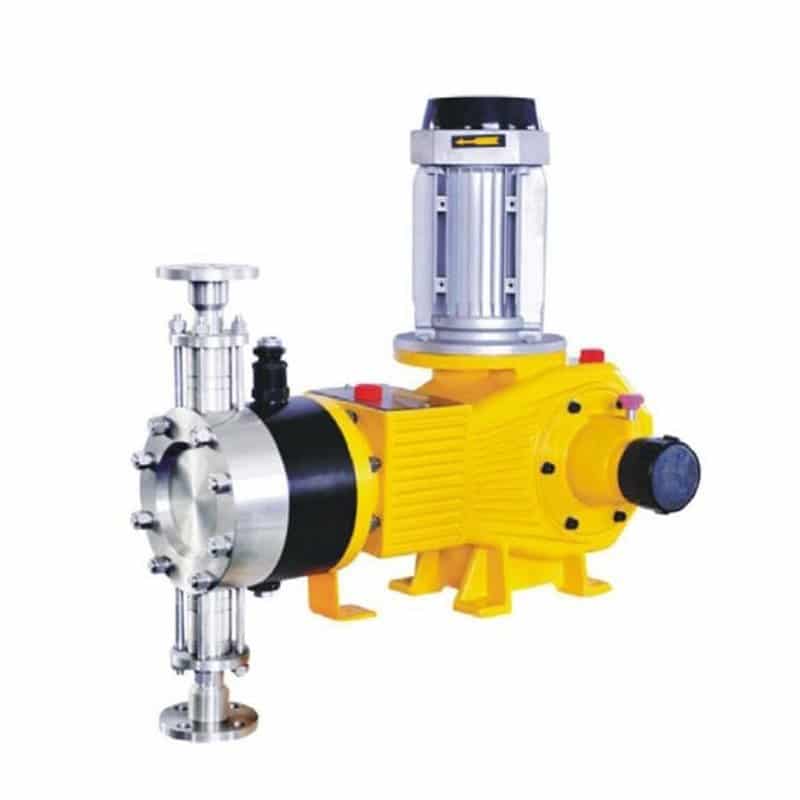
How does a dosing pump work?
Dosing pump draws a certain amount of liquid into its chamber and injects the chemical into the tank or pipe containing the fluid being metered. It is powered by an electric motor or air actuator and has a controller that turns the pump on and off and manages the flow rate.
Diaphragm pumps are positive displacement pumps that use reciprocating diaphragms to move the fluid. They are found to be very reliable because they have no internal parts to rub against each other, creating friction and causing wear. In addition, because they do not require seals or lubrication in the pump head, there is no possibility of oil vapor contamination or leakage of the pumped medium.
Diaphragm metering pumps have a diaphragm, two valves, a displacement chamber and a drive mechanism. The diaphragm is a flexible diaphragm that vibrates to create suction to move fluid into and out of the pump chamber. It is located between the side of the discharge chamber and the connection flange. The two valves are usually baffle valves or spring loaded ball valves made of the same material as the diaphragm. They operate by allowing fluid to move in and out of the chamber.
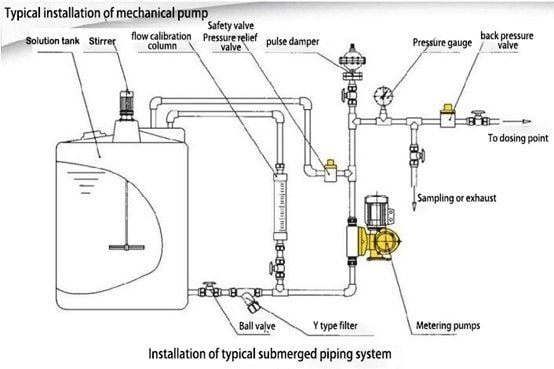
Dosing pump application scenarios
Dosing pumps(chemical dosing pump) are commonly used in water treatment, food, petrochemical, industrial plants, agriculture, manufacturing facilities, medical laboratories and mining operations. Chemical feed pumps can be used to add corrosive chemicals or acids to water storage tanks to neutralize pH levels. It can also be used as a chlorine pump to kill bacteria. Chemical metering pumps are designed to operate in challenging situations, such as high temperature and high pressure environments.
Types of dosing pumps
Metering pumps are available in a variety of types and sizes. Whether they are used in food processing applications, manufacturing plants or anywhere else where liquids need to be pumped in constant and precise amounts, there is a metering pump that is perfect for the job. The four conventional metering pump types are designed for different pressures, chemicals and applications. They vary by pumping action and mechanism:
- Diaphragm (constant injection) pumps use diaphragms, pistons and valves at the inlet and outlet to fill and empty their chambers. The pumping of the piston fills the chamber and injects a specific amount of chemical at a preset rate, usually as a percentage of the maximum flow rate. Some pump models are capable of varying the dose rate.
- Diaphragm (pulse jet) pumps also use a diaphragm mechanism, but instead of a constant flow rate, a solenoid coil draws in the chemical and injects it in pulses. The flow rate is the length of time between pulses. It is not as accurate as a constant injection pump, but the design is simple and inexpensive.
- Lobe pump A pump that allows a certain volume of fluid to pass through a meshed gear impeller. It is not as accurate as a diaphragm pump and is only suitable for high viscosity fluids that have a self-lubricating effect to minimize wear. They are not made for low flow rates, as it is difficult to ensure accuracy.
- Peristaltic pumps are very accurate in metering. The flexible bent tube allows the fluid to pass through and the flow rate is controlled by a roller, which is moved by an external robotic arm. This pushes the product in the tube into the metering tube and the main fluid stream.
Among the pump types available for chemical feed systems are:
- Solenoid dosing pumps – the simplest design and the least expensive type of metering pump. A solenoid valve controls a spring-loaded reset piston that pushes out a specific amount of fluid in each stroke. The flow rate is regulated by increasing the frequency of the strokes. This type of pump is used for low flow applications.
- Peristaltic dosing pumps – also available in a simple design, but they can be more expensive. A continuous tube is wrapped around a wiper that rotates to push out fluid. The speed of the motor is adjusted to control the flow rate.
- Diaphragm dosing Pumps – Designed to handle high flow processes, such as water treatment facilities. In these applications, the chemistry of the water must be carefully analyzed and controlled. Multi-diaphragm metering pumps can be used to inject a variety of chemicals to control different chemical properties. The design consists of a flexible diaphragm controlled by a motor and an adjustable stroke lever. The flow rate is controlled by varying the diaphragm stroke frequency (motor speed) and the amount of chemical delivered per stroke (diaphragm stroke length). In complex water treatment systems with multiple pumps, motor speed can be controlled by water flow rate and chemical delivery can be controlled using a chemical analyzer.
- Metering pumps – are positive displacement pumps designed to inject chemicals or other substances into water, gas or water streams. The fluid moves through expansion and contraction chambers. Powered by electric motors or pneumatic actuators, these metering pumps are a central part of chemical metering systems designed for the automatic dispersion of chemicals, acids, bases, corrosive, hazardous or viscous liquids and slurries. Chemical metering pumps are used in water treatment, agriculture, pharmaceuticals, food processing, mining and manufacturing.
Advantages of dosing pumps
They typically move small amounts of liquid – Because metering pumps are so accurate and precise, they are typically used to move small amounts of liquid. They are typically measured by their ability to pump gallons per minute, rather than the industry standard of gallons per hour.
They can pump all types of liquids – Metering pumps are capable of moving all kinds of liquids, from thin to thick, and even hazardous or corrosive chemicals.
They can be used in many different applications – Metering pumps are used in many different industries, including pharmaceuticals, food processing, agriculture and manufacturing.
They prevent contamination – Both diaphragm metering pumps and peristaltic metering pumps are effective in preventing the media being pumped from contaminating the pump and workspace.
While metering pumps are suitable for many applications and different liquids, they are not recommended for moving most types of gases.
Parts of a Chemical Dosing System
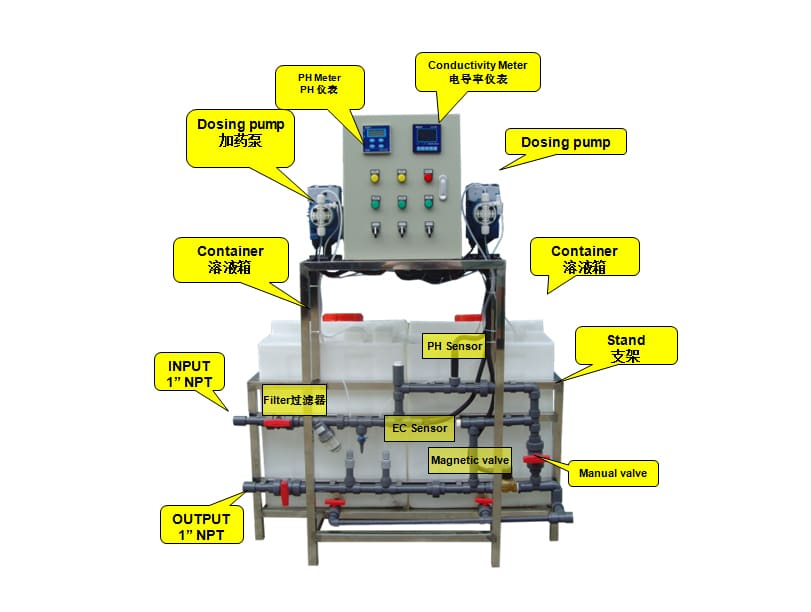
Main components of a dosing pump include:
- Chemical vessel or tank – holds the product to be dosed.
- Pump-Various materials and sizes; includes inlet, suction, and dosing tubes.
- Injector-a one-way valve into which the chemical is injected into the product; overcomes the pressure in the piping and allows the chemical to enter the liquid flow.
- Bottom valve-a one-way valve attached to the suction line; placed inside the product drum to keep the pump in the starting position.
- Dosing line – rigid or reinforced hose; can be PE, PVC, or stainless steel for high pressure use.
- Control system – ensures accuracy; opens and closes at specific times. Can be a simple flow switch or timer, to a variety of sensors for SCADA central control systems, and can be integrated into a larger system.
Dosing Metering Pump Basic Components
Drive: Pumps are usually driven by AC constant speed motors. Variable speed, pneumatic and hydraulic drives are also used. Smaller pumps use solenoid coils as an economical drive mechanism.
Drive mechanism: The drive mechanism converts the rotary motion of the drive into a reciprocating motion. Industrial pumps submerge this part of the pump in an oil bath to ensure reliability during continuous operation. Solenoid pumps use solenoids to generate linear motion directly.
Flow rate adjustment: Pump flow rate adjustable by varying stroke length, effective stroke length, or stroke speed. Most metering pumps are equipped with micrometer screw adjustments, or electronic or pneumatic actuators to adjust the pump flow in response to process signals.
Accuracy: The steady-state accuracy of a properly installed industrial-grade metering pump is typically + 1.0% or better. While a metering pump can generally regulate the pump at any flow rate between 0 and its maximum capacity, its accuracy is measured over a range determined by the pump’s regulation ratio. Today’s hydraulically driven metering pumps have a regulation ratio of 1000 -1, which means the pump will accurately dose chemicals anywhere between 0.1% and 100% of its rated capacity.
Liquid end: The liquid end is called the “wet” part of the pump. Its ability to protect plant personnel and the environment is an important consideration when handling toxic or hazardous chemicals. Stainless steel, nickel alloy, or plastic material – depending on the specifications of the application, including: temperature, flow rate, fluid viscosity and the corrosiveness of the material to be pumped.
Recently, “smart” materials have been significantly improved, enabling haosh pump manufacturers to design smaller, more efficient, more powerful, longer-running and more reliable pumps.

